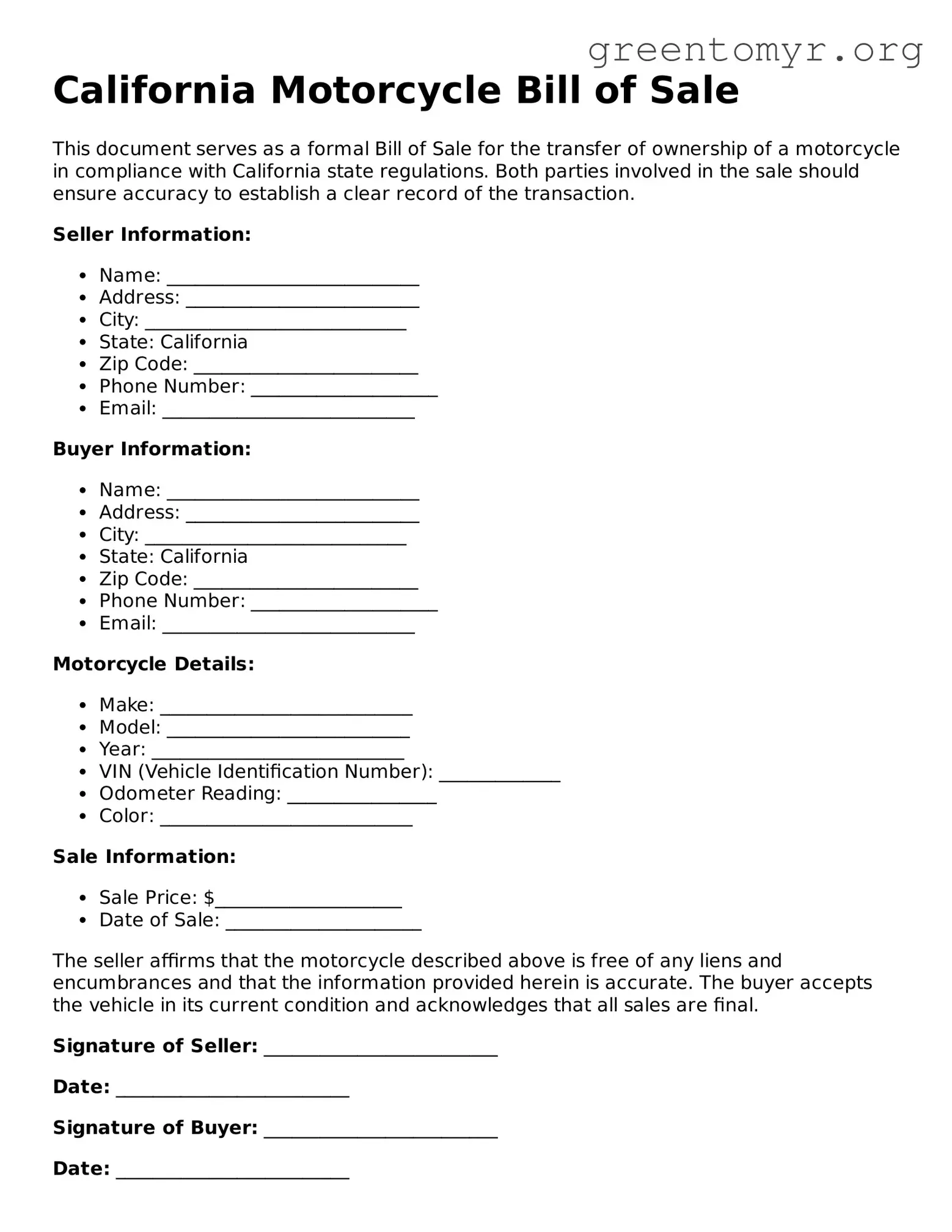California Motorcycle Bill of Sale
This document serves as a formal Bill of Sale for the transfer of ownership of a motorcycle in compliance with California state regulations. Both parties involved in the sale should ensure accuracy to establish a clear record of the transaction.
Seller Information:
- Name: ___________________________
- Address: _________________________
- City: ____________________________
- State: California
- Zip Code: ________________________
- Phone Number: ____________________
- Email: ___________________________
Buyer Information:
- Name: ___________________________
- Address: _________________________
- City: ____________________________
- State: California
- Zip Code: ________________________
- Phone Number: ____________________
- Email: ___________________________
Motorcycle Details:
- Make: ___________________________
- Model: __________________________
- Year: ___________________________
- VIN (Vehicle Identification Number): _____________
- Odometer Reading: ________________
- Color: ___________________________
Sale Information:
- Sale Price: $____________________
- Date of Sale: _____________________
The seller affirms that the motorcycle described above is free of any liens and encumbrances and that the information provided herein is accurate. The buyer accepts the vehicle in its current condition and acknowledges that all sales are final.
Signature of Seller: _________________________
Date: _________________________
Signature of Buyer: _________________________
Date: _________________________
Both parties should retain a copy of this document for their records. This Bill of Sale serves as proof of the transfer of ownership.
